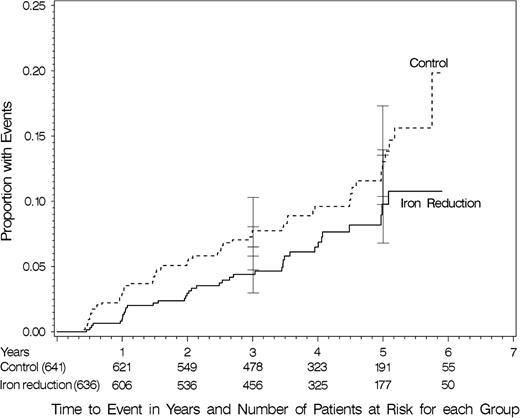
Decreased Cancer Risk After Iron Reduction in Patients With Peripheral Arterial Disease: Results From a Randomized Trial
AbstractBackground. Excess iron has been implicated in cancer risk through increased iron-catalyzed free radical–mediated oxidative stress.Methods. A multicente
“Analysis showed a 37% reduction in overall cancer incidence with iron reduction and reduced cancer-specific and all-cause mortality among patients who developed cancer in the iron reduction arm compared with those in the control arm.”
“Findings from this study support the hypothesis that ambient levels of body iron stores represented by the serum ferritin level are associated with cancer risk and that lowering iron levels reduces cancer risk.”
“In this study, iron reduction appeared to begin reducing cancer risk relatively soon (within 6 months) after randomization. This timing presumably reflects an effect on incipient malignant disease and is consistent with the observation that increased risk of malignancy following blood transfusion is evident within 6 months ( 16 )”
“A 6-month phlebotomy schedule appears adequate for maintaining low-risk ferritin levels.”
“Thus, iron deficiency may exist when ferritin levels decline to less than about 12 ng/mL, whereas ferrotoxic disease may occur with levels greater than about 50 ng/mL ( 1 , 23 ). However, threshold levels of body iron capable of contributing to disease risk may vary according to the disease in question, the antioxidant status of the individual, and other factors.”
